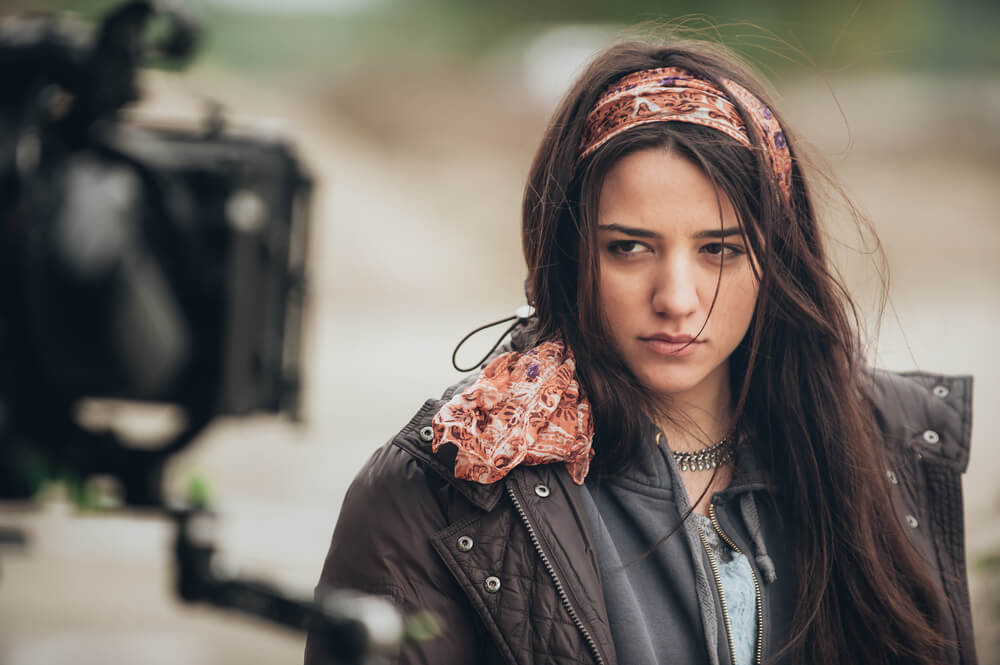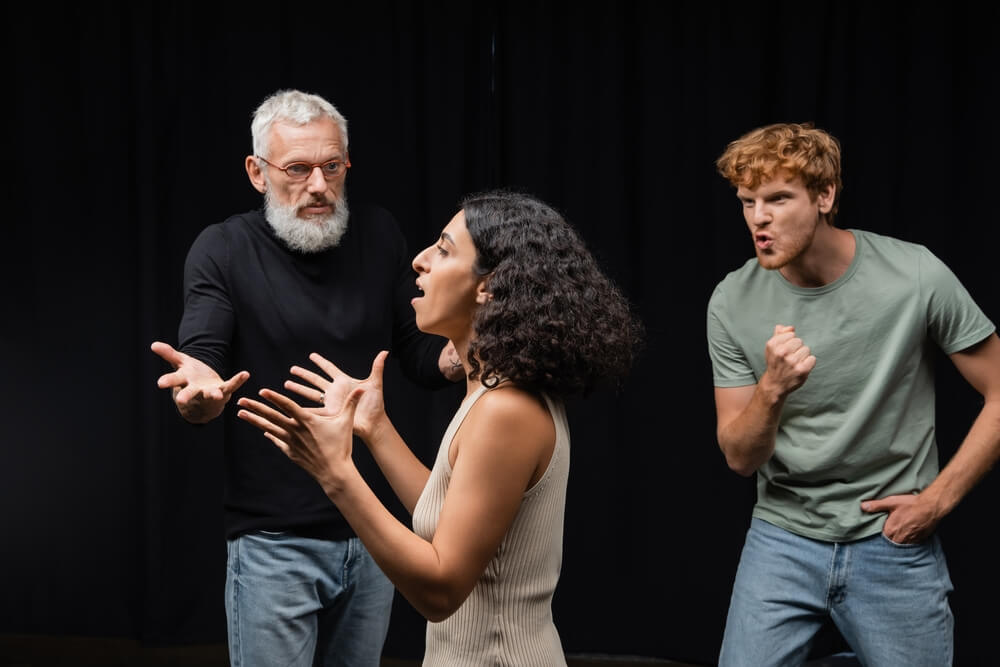The Art of Acting for Dramatic Close-Ups: Mastering the Intimate Screen Moment
Close-up shots are some of the most powerful and memorable moments in film and television. Whether it’s an actor’s facial expression, a detail in a scene or a key object, close-up shots can bring the viewer closer to the action and create a deeper emotional connection. In close-up shots, every detail matters, and the camera’s lens becomes a window into the character’s thoughts, feelings and motivations. As an actor, delivering a powerful performance in a close-up shot can be the difference between a forgettable scene and a memorable one. Let’s explore the techniques that actors need to master to deliver such shots.
Body Language
In close-up shots, body language is important because the camera is capturing every subtle movement and gesture. The viewer is focused primarily on the actor’s face and upper body, so body language can be used to emphasize the emotions and thoughts expressed through the actor’s face. For example, a slight nod or shake of the head can indicate agreement or disagreement, while crossing one’s arms can signal defensiveness or closed-off behavior.
Body language can also convey important contextual information about a character’s background or situation. For instance, a character who grew up in poverty may have different posture or movements than a character who grew up in a wealthy family.
In Netflix’s Stranger Things, the character of Eleven, played by Millie Bobby Brown, has a unique posture due to her telekinetic abilities, often holding her head and neck at a tilted angle when she uses her powers.
In the series Wednesday, which is a spin-off of The Addams Family, the entire family has a distinctive posture, with their shoulders back, heads held high and limbs often held stiffly at their sides, which contributes to their macabre and eccentric personalities.
Facial Expressions
Facial expressions are crucial elements of cinematography and filmmaking. They allow emotion and inner thoughts to be conveyed nonverbally, articulating a wide range of feelings ranging from happiness to fear and sadness. When captured in close-up the shot, the effect of facial expressions is dramatically amplified, as the actors’ every expression and facial contour can be clearly and unmistakably depicted.
Close-up shots allow the audience to focus solely on the actor’s face, creating an intimate connection between the viewer and the performer. The expressions captured in a close-up shot can convey a wealth of information about the character’s emotional state, even without any dialogue or context. This technique is often used in film and television to build tension or to communicate a character’s inner turmoil.
For example, a close-up shot of an actor’s face showing fear can create a sense of unease in the viewer. The audience can see the subtle changes in the actor’s expression, such as a widening of the eyes or a tensing of the jaw, that indicate the character is scared. Similarly, a close-up shot of a character’s face showing joy can elicit a positive emotional response from the viewer.
In addition to conveying emotions, close-up shots of facial expressions can also be used to highlight details that may be important to the story. For example, a close-up shot of a character’s face showing a scar or a tattoo can provide important context about the character’s backstory or motivations.
When used effectively, this technique can enhance the viewer’s emotional connection to the story and the characters, creating a more immersive and impactful experience.
Not to get all nostalgic, but some of the greatest examples of facial expressions are:
Jim Carrey’s characters: Jim Carrey is known for his exaggerated and expressive facial expressions in his comedic roles, such as in The Mask and Ace Ventura: Pet Detective. His ability to contort his face in unique ways has become a defining trait of his acting style.
Jack Nicholson’s characters: Jack Nicholson is another actor known for his expressive face. He has a distinctive grin and a mischievous glint in his eye that he often incorporates into his characters, such as in The Shining and One Flew Over the Cuckoo’s Nest.
Johnny Depp’s characters: Johnny Depp has played a variety of eccentric characters throughout his career, each with their own distinct facial expressions. From the playful and mischievous Jack Sparrow in the Pirates of the Caribbean franchise to the dark and brooding Sweeney Todd, Depp’s facial expressions add depth and nuance to his performances.
The Joker: Whether portrayed by Jack Nicholson or Heath Ledger, The Joker is a character with some of the most distinct facial expressions in cinema. From his sinister grin to his wild and manic laughter, The Joker’s facial expressions are often used to convey his unpredictable and dangerous nature.
Vocal Delivery
Vocal delivery is just as important as facial expressions in close-up shots. When the camera is focused on an actor’s face, every subtle inflection in their voice can be heard and analyzed by the audience. This makes the way an actor speaks a crucial part of their performance, as it can convey a wide range of emotions and add depth to the character they are playing.
The vocal delivery can provide important context to the scene and reveal the character’s inner thoughts and feelings. For example, a whispered line delivered in a close-up shot can create a sense of intimacy and vulnerability, while a booming, angry shout can create tension and fear in the viewer.
In addition to conveying emotions, the tone and pitch of an actor’s voice can provide important information about the character they are portraying. A character with a high-pitched voice and nervous delivery may be seen as weak or vulnerable, while a deep, commanding voice can convey strength and authority.
Any false notes in vocal delivery can be easily detected by the audience. Actors need to deliver their lines with the right tone, inflection and pacing to create a convincing and engaging performance.
Think about Tom Hanks. He’s great when it comes to vocals. In News of the World, a Western drama, Hanks plays a former Confederate officer who travels the country reading the news to townspeople. His vocal delivery is calm and measured, reflecting the character’s experience and wisdom. Hanks’ voice adds depth to the character and helps to create a sense of authenticity in the film.
And in Baz Luhrmann’s ELVIS, well, you just have to see it for yourself.
Another great vocal actor is Olivia Colman. In the Netflix series The Crown, she delivers an outstanding performance as Queen Elizabeth II. Colman’s voice is full of subtlety and nuance, conveying the queen’s stoicism, vulnerability, frustration and warmth with incredible authenticity. Her impeccable timing and delivery make every line feel like a revelation.
There are some other behind the scenes techniques such as lighting, sound design and camera movement. By using one or more of these techniques, filmmakers can create powerful emotional moments in close-up shots that can engage and move their audience.
Lighting: Depending on what mood you want to convey, lighting’s role can vary when shooting in close-up. For instance, it may be used to create a mysterious or suspenseful mood, or to create a sense of happiness or optimism.
Sound Design: Sound design can enhance the emotional impact of a close-up shot. Using music or sound effects can help create a mood or atmosphere that complements the actor’s performance and helps convey the desired emotion.
Camera Movement: Camera movement can be used to create emotional impact in a close-up shot by using a slow zoom which can create a sense of intensity or focus on the actor’s emotions, while a quick pan can create a sense of surprise or urgency.
It’s important for actors to know that close-ups are not just about showcasing their physical appearance, but also about expressing the inner workings of their characters. By mastering close-ups, actors can convey a range of emotions and subtle nuances that might be missed in wider shots. This level of control over their performance can make all the difference in delivering a powerful and convincing portrayal.
Looking to get your big break? Sign up or login to Casting Networks and land your next acting role today!
You may also like:
- The Essential Skills for Limited Series Acting: What it Takes to Deliver a Compelling Performance
- Meet the Creator: Daniel Peera
- How to Become an Actor in Orlando
Ilana Rapp is a media-savvy Generation Xer with instinctive wit, quick humor and a taste for deep human emotions. As a former (child) actress with Broadway, film and television credits, she is adept at, well, lots of things.




